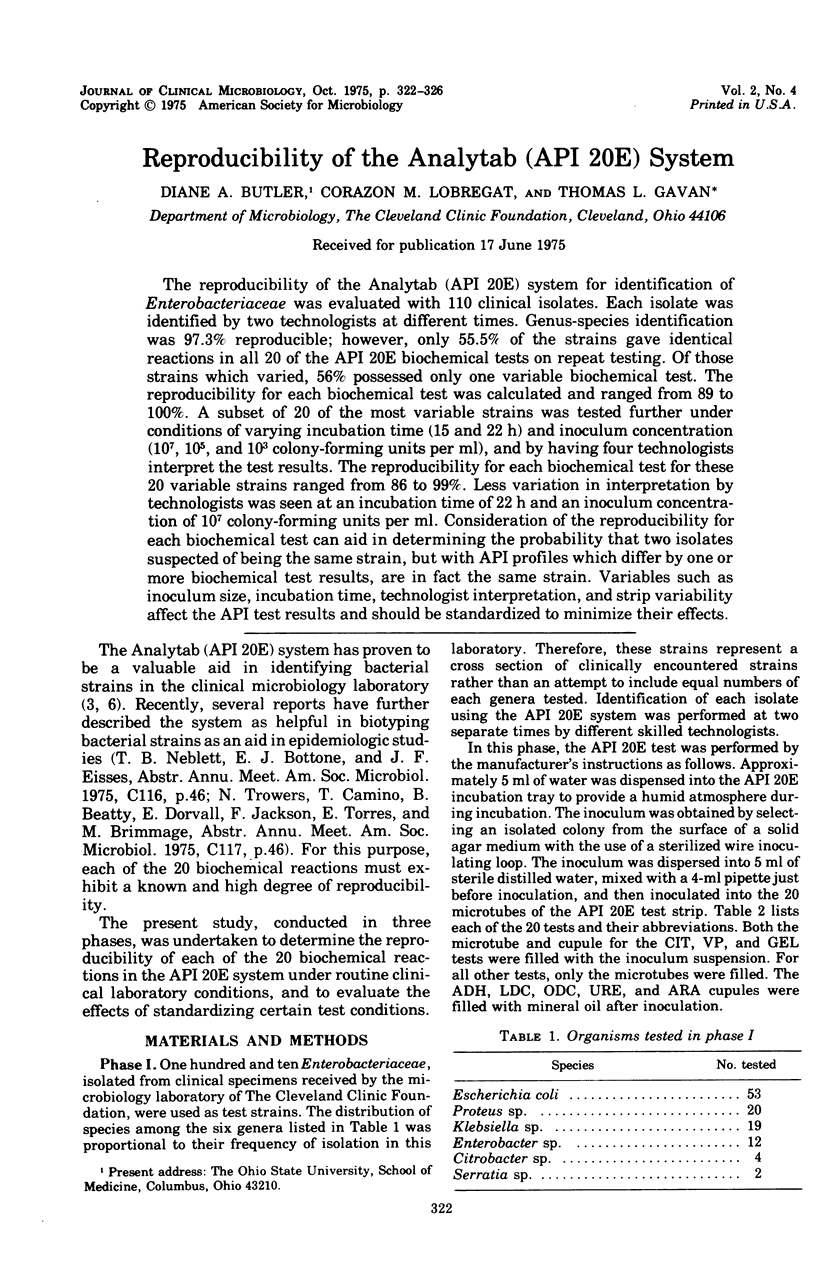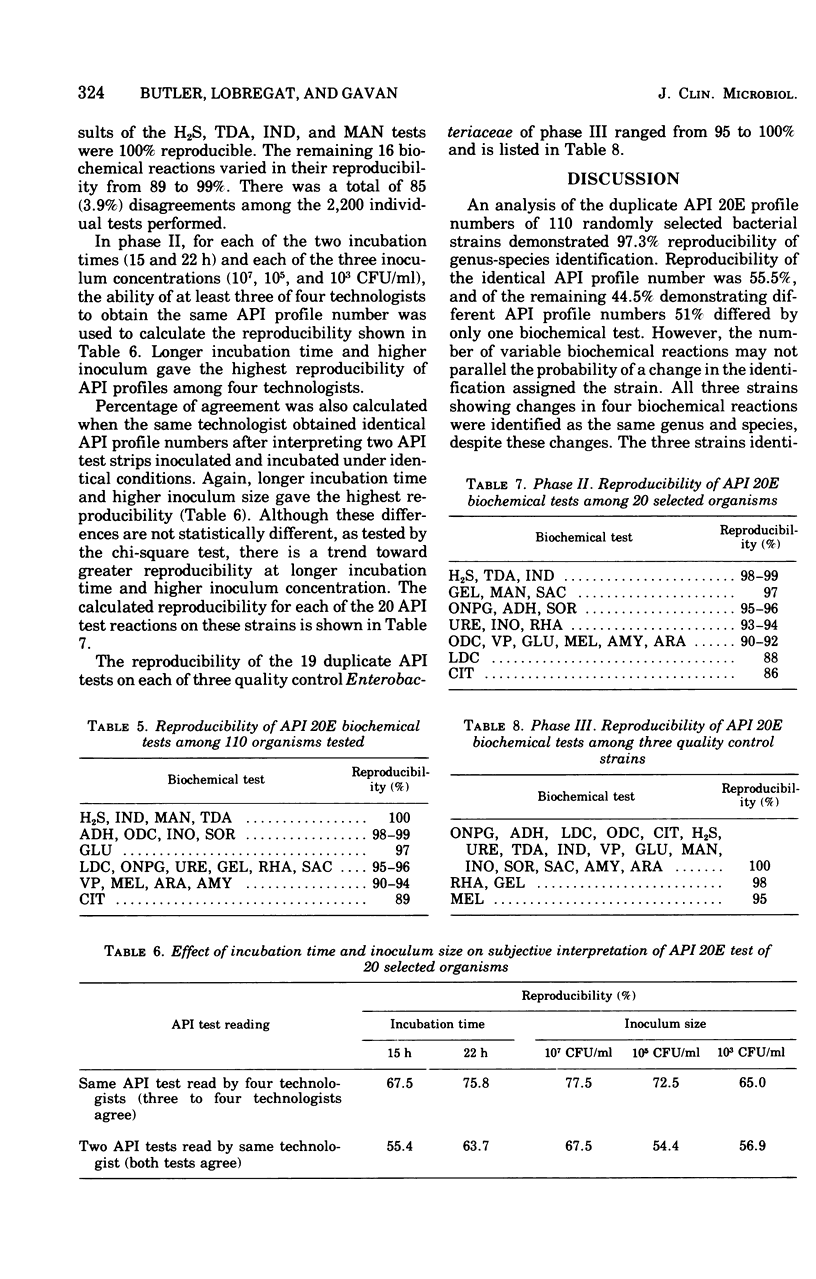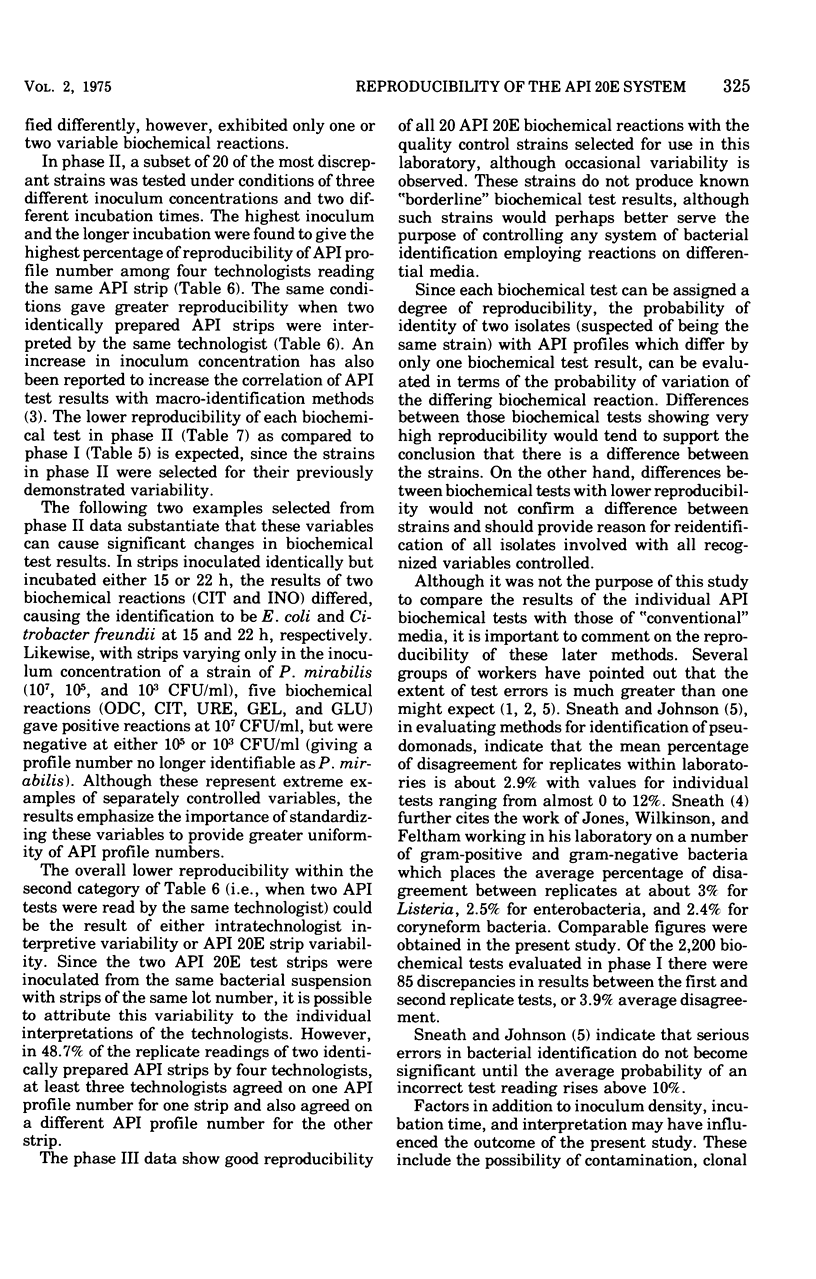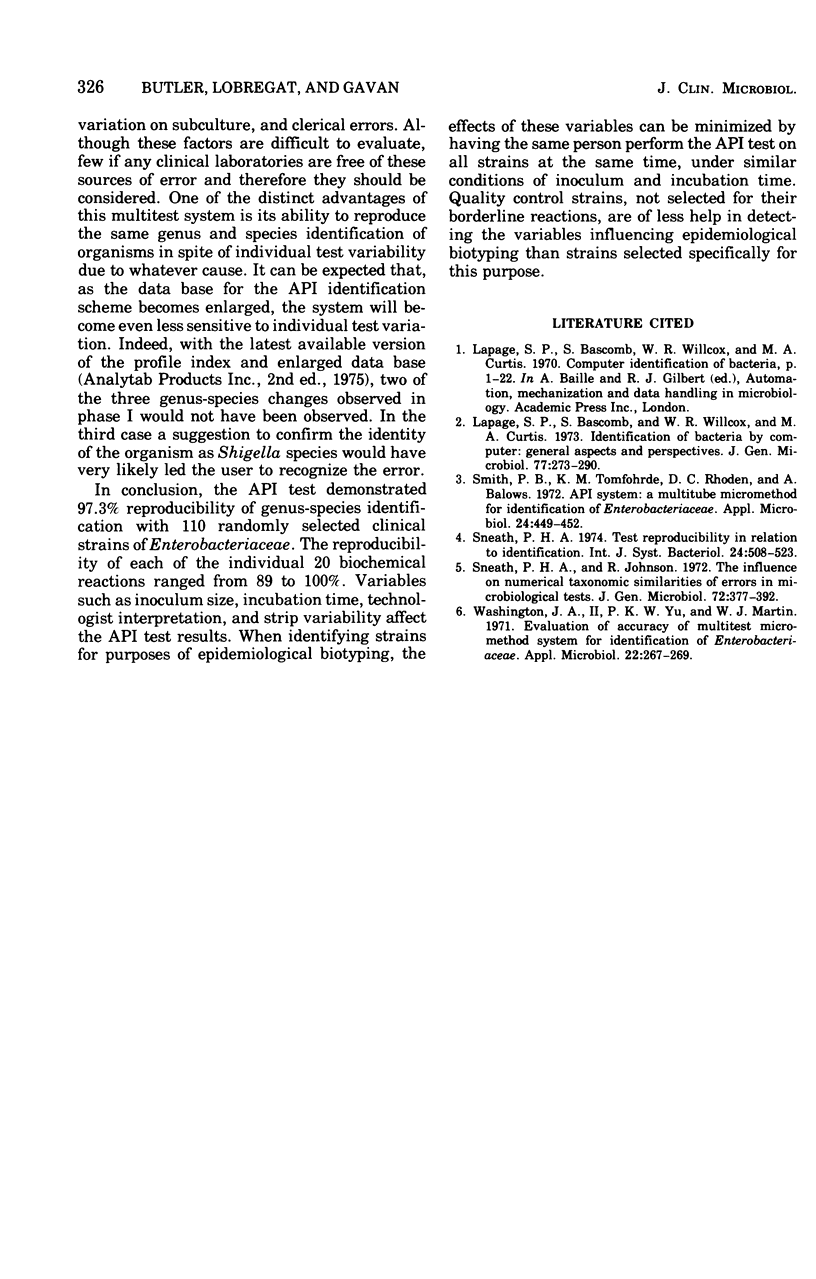Abstract
The reproducibility of the Analytab (API 20E) system for identification of Enterobacteriaceae was evaluated with 110 clinical isolates. Each isolate was identified by two technologists at different times. Genus-species identification was 97.3% reproducible; however, only 55.5% of the strains gave identical reactions in all 20 of the API 20E biochemical tests on repeat testing. Of those strains which varied, 56% possessed only one variable biochemical test. The reproducibility for each biochemical test was calculated and ranged from 89 to 100%. A subset of 20 of the most variable strains was tested further under conditions of varying incubation time (15 and 22 h) and inoculum concentration (10(7), 10(5), and 10(3) colony-forming units per ml), and by having four technologists interpret the test results. The reproducibility for each biochemical test for these 20 variable strains ranged from 86 to 99%. Less variation in interpretation by technologists was seen at an incubation time of 22 h and an inoculum concentration of 10(7) colony-forming units per ml. Consideration of the reproducibility for each biochemical test can aid in determining the probability that two isolates suspected of being the same strain, but with API profiles which differ by one or more biochemical test results, are in fact the same strain. Variables such as inoculum size, incubation time, technologist interpretation, and strip variability affect the API test results and should be standardized to minimize their effects.
Full text
PDF




Selected References
These references are in PubMed. This may not be the complete list of references from this article.
- Lapage S. P., Bascomb S., Willcox W. R., Curtis M. A. Identification of bacteria by computer: general aspects and perspectives. J Gen Microbiol. 1973 Aug;77(2):273–290. doi: 10.1099/00221287-77-2-273. [DOI] [PubMed] [Google Scholar]
- Smith P. B., Tomfohrde K. M., Rhoden D. L., Balows A. API system: a multitube micromethod for identification of Enterobacteriaceae. Appl Microbiol. 1972 Sep;24(3):449–452. doi: 10.1128/am.24.3.449-452.1972. [DOI] [PMC free article] [PubMed] [Google Scholar]
- Sneath P. H., Johnson R. The influence on numerical taxonomic similarities of errors in microbiological tests. J Gen Microbiol. 1972 Sep;72(2):377–392. doi: 10.1099/00221287-72-2-377. [DOI] [PubMed] [Google Scholar]
- Washington J. A., 2nd, Yu P. K., Martin W. J. Evaluation of accuracy of multitest micromethod system for identification of Enterobacteriaceae. Appl Microbiol. 1971 Sep;22(3):267–269. doi: 10.1128/am.22.3.267-269.1971. [DOI] [PMC free article] [PubMed] [Google Scholar]


